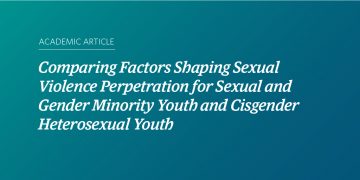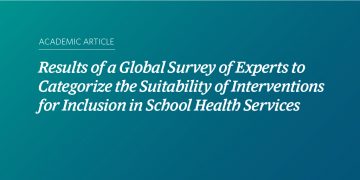The health and wellbeing of Indigenous adolescents: a global collective for an equitable and sustainable future
Excerpt Indigenous peoples, comprising almost 500 million individuals from across 90 countries, hold the longest continuous cultures on this planet.1 Despite the negative impacts of colonisation, Indigenous peoples have survived and continue to nurture and live their Indigenous knowledges, languages, and cultural practices. Indigenous peoples have made substantial contributions to global health… Global Collective for […]
Trends and disparities in suicidality among heterosexual and sexual minority/Two Spirit Indigenous adolescents in Canada.
Abstract Purpose: To explore trends in sexual orientation group differences in suicidality among Indigenous adolescents and evaluate whether gaps between heterosexual and sexual minority/Two-Spirit adolescents have changed over time. Methods: Leveraging pooled school-based population data from five waves of the British Columbia Adolescent Health Survey (1998–2018), we used age-adjusted logistic regression models, separately for boys and […]
Promoting cardiovascular nursing practice and research: A model for a university joint appointment
Abstract Background: University joint appointments promote continuity of academic leadership and the acceleration of nurses’ impact on improved outcomes and health service delivery. The role of university-appointed and hospital-located nurse scientists is of growing interest in the academic and clinical settings, and within the nursing profession. There is a pressing need to describe and study models […]
Romantic love and involvement in bullying and cyberbullying in 15-year-old adolescents from eight European countries and regions
Abstract Sexual minority youth are at greater risk for bullying victimization than their heterosexual peers but data on perpetration and cybervictimization is limited. Using representative data from seven European countries and one region (N = 14,545), this study compared traditional bullying victimization and perpetration, and cyberbullying victimization among 15-year-old adolescents who reported ever being in love with […]
First time sexual experiences of sexual minority adolescent girls in the United States
Abstract Cisgender sexual minority girls report an earlier average age at first sex than cisgender heterosexual girls, but little is known about these first experiences with sex. As part of a larger study to develop a sexual health intervention for cisgender sexual minority girls, this analysis explored the context of first sexual experiences of 48 […]
Experiences of discrimination or violence and health outcomes among Black, Indigenous and People of Colour trans and/or nonbinary youth
Abstract Aims: Identify the relationship between experiences of discrimination or violence and health outcomes for transgender and nonbinary Black, Indigenous and People of Colour (BIPOC) compared to their white trans and nonbinary peers. Design: A national online survey, the 2019 Canadian Trans and Nonbinary Youth Health Survey, was conducted among youth ages 14-25, in English and French. […]
Priority indicators for adolescent health measurement – recommendations from the Global Action for Measurement of Adolescent Health (GAMA) advisory group.
Abstract Purpose: This article describes the selection of priority indicators for adolescent (10–19 years) health measurement proposed by the Global Action for Measurement of Adolescent health advisory group and partners, building on previous work identifying 33 core measurement areas and mapping 413 indicators across these areas. Methods: The indicator selection process considered inputs from a broad range […]
Youth characteristics associated with sexual violence perpetration among transgender boys and girls, cisgender boys and girls, and non-binary youth.
Abstract Importance: Gender minority adults experience higher rates of sexual violence (SV) thancisgender adults. How this disparity extends to youths, including perpetration rates, is unknown. Objective: To compare rates of experience and perpetration of SV by gender identity andinvestigate characteristics associated with odds of perpetration within gender identity categories. Design, Setting, and Participants: This cross-sectional study […]
Comparing Factors Shaping Sexual Violence Perpetration for Sexual and Gender Minority Youth and Cisgender Heterosexual Youth
Abstract Sexual and gender minority (SGM) youth experience higher rates of sexual violence victimization than their cisgender heterosexual counterparts. Very little is known about how the minority status of SGM youth contextualizes their victimization and perpetration experiences. In one-on-one interviews with 39 SGM youth and 11 cisgender heterosexuals (non-SGM) youth, we compared the contextual factors […]
Results of a Global Survey of Experts to Categorize the Suitability of Interventions for Inclusion in School Health Services
Abstract Purpose: This global survey of experts assessed the suitability of different health-related interventions for inclusion in school health services (SHSs) to inform development of the World Health Organization global guideline on SHSs. Methods: A review of 138 global World Health Organization publications identified 406 health service interventions for 5- to 19-year-old individuals. These were consolidated, pretested, […]



